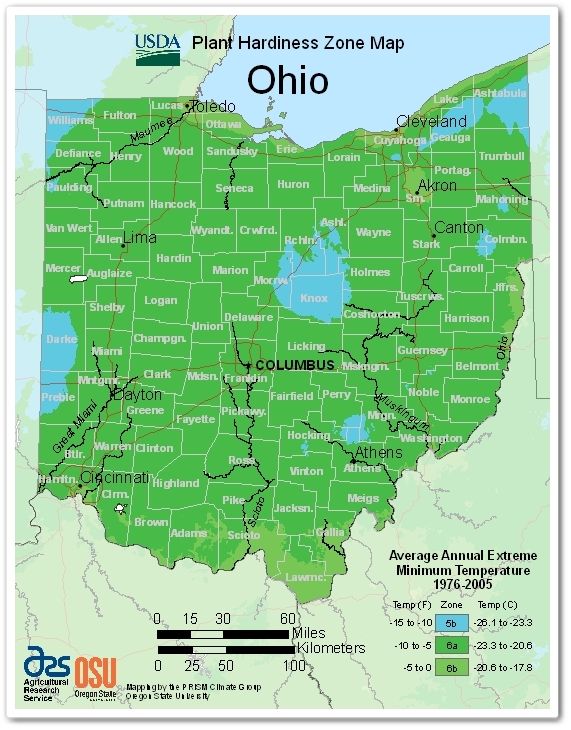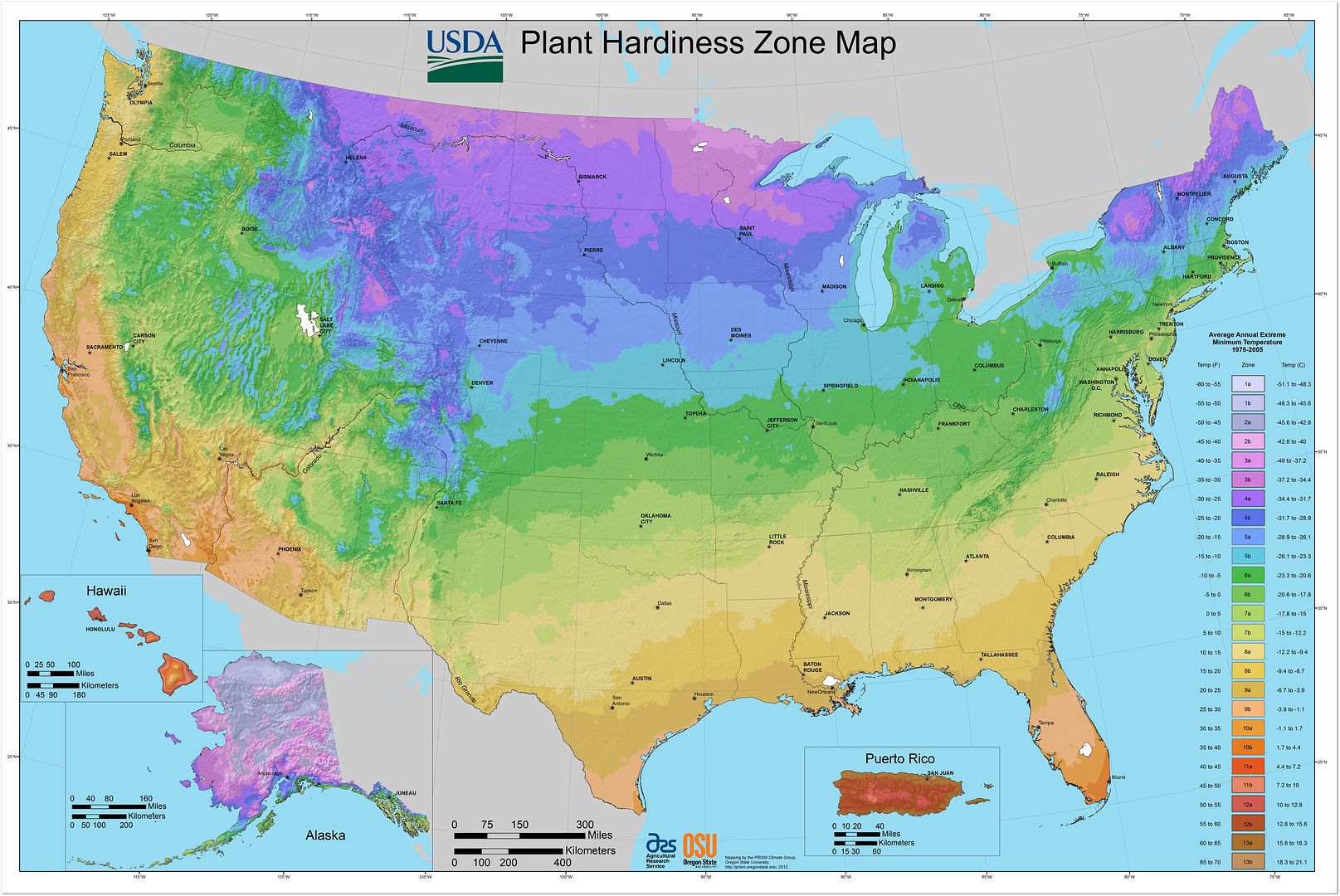This is old news for some, but in case you haven't heard, the USDA released a new growing zone map in January. Many gardeners found themselves now residing and gardening in a zone warmer than they were previously. I thought that would be the case for me, but it wasn't.
I've been in Zone 5b for as long as I've been a gardener and that's where I am still. Though everyone around me jumped to Zone 6a, I'm still in a little pocket of Zone 5b and I agree with this. There's no way my garden is Zone 6.
 |
| Click here to see a larger version. I'm in Paulding County - in the blue part. |
For years, gardeners have lived and died by the growing zone ratings each plant is given, based on the highest and lowest temperatures a plant can typically survive. We read it and if it says the plant is only hardy to zones warmer than ours, we don't buy them, right? HA! I mean, who hasn't tried to push the limits by growing a plant that isn't supposed to live through the winter or summer where they live?
The sources of information for those tags aren't always in agreement with each other either. For example, when I first planted Origanum 'Kent Beauty' many years ago, the tag said it was hardy to Zone 6. But I was in love with it and I had a warmish spot on the south side of our family room where I knew the crocus bulbs emerged earlier in the spring, and the mini roses leafed out there before they did at any other location on our property. I had to try it.
 |
| Origanum rotundifolium 'Kent Beauty' ~ July 2011 |
It performed well that first summer and I was a happy girl. But after one winter, it didn't return the next spring. A couple of years later, I tried again. This time, the tag said it was hardy to Zone 5, and indeed, that second 'Kent Beauty' has returned for several years. Did anything change? No. Plant tags differ, and perhaps the winters were more mild or we had more snow cover. In any case, I consider this plant to be marginal for me, no matter which zone the tag says, based on my experience. Win some, lose some. In this case, I'm winning. (So far.)
A lot of data was used to come up with this new map - data that wasn't used in previous incarnations of it. So this new one should be more accurate. But experienced gardeners know what will grow in their gardens and what won't, regardless of what the hardiness maps say. They know that it's more than zone that determines a plant's viability.
 |
| Click on image for a larger version and click here for an interactive map. |
This new map, just like the old one, will help the novice gardener by giving them an educated guess as to what their plant choices are. But they should also consider soil, protection from wind, sun exposure, moisture, and proximity to buildings, among other things. Nearly every garden has micro-climates that allow them to grow outside their zone.
Take the new map under advisement, but realize that living things are always subject to the effects of many different factors. It's only a guideline, not gospel.
For more information, visit the USDA website. Did your zone change with the new map?
















 "Bejeweled"
"Bejeweled"



7 comments:
Oh, yes, I've bought things that just barely survive here, too, but usually it is the intense Summer heat that kills instead of Winter's cold.
Hope you had a beautiful Easter!
Lea
Lea's Menagerie
Great advice here....I too am guilty of challenging the zone tags.
When we moved to our hill the winter of '79-'80 I calculated we were Zone 4b. Now according to the new map we are zone 5b - and I think that is accurate. We all have to pay attention to our microclimates, though. We are at 1700 feet, but because our property is on a southern slope with northwesterly winds, we have a longer frost-free season than our nearest neighbor. the wind moves the frost into their garden early and late.
Wonderful advice. It is much warmer up against the house and in areas of wind protection. We have had some surprises emerge from under the patio bricks each year, too. Recently we built a conservatory/sun room--finished in November '11, so we can bring some of the potted ones in for the winter. We kept our geraniums alive this way.
I didn't realize I'd left my last comment from my Beautiful Mustang account. My two passions are horses and gardening and I blog for them separately.
I've actually gotten away with pushing the zone limit here, partially because Brooklyn is in a "microclimate" of sorts, being so close to the ocean water. Also, our yard is surrounded on 3 sides by 1-story sheds / garage walls / our house...so our plants have a lot of protection against wind and the buildings retain a lot of heat. It's allowed me to get away with things that a friend of mine 1.5 hours due west of me can't!
Lea ~ Yeah, that heat can be a killer, too. We've had pretty hot and dry summers the last several years, which has changed my gardening somewhat. It's always something, isn't it?
Darla ~ I think we're all a little guilty of that! ;-)
Pat ~ I love how we become intimate with our gardens and we just know what works and what doesn't, through trial and error. It's like much of life, isn't it?
Linda ~ Oooh! I'll bet you really enjoyed your conservatory/sun room, didn't you? Awesome to have plants surrounding you in all four seasons!
Aimee ~ It amazes me what the people on the east side of NY state can get away with because of that water business!
Post a Comment